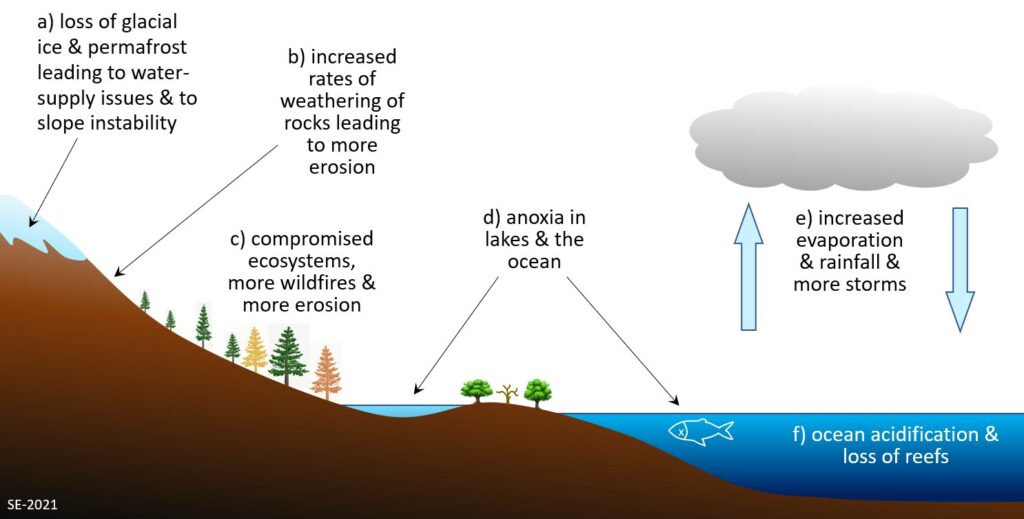15.4 Climate Change and Earth Systems
A warming climate has many implications for Earth Systems, and although most of those have been mentioned already in this chapter and in previous ones, it is worth reviewing a few of them here. Some of these impacts are shown on Figure 15.4.1, and are summarized below.
- Warming is contributing to the loss of glacial ice and permafrost. Both of these can lead to instability of slopes and to enhanced erosion. The loss of glacial ice will exacerbate water shortages for humans and ecosystems.
- Higher carbon dioxide levels (and hence more carbonic acid) along with higher temperatures will promote chemical weathering, which can also contribute to instability of slopes.
- More heat and evaporation will result in compromised terrestrial ecosystems leading to more wildfires and more damage from pests. Both of those outcomes will contribute to slope instability, erosion and more rapid transfer of sediments to the ocean.
- Warmer water can hold less oxygen than cooler water, and that is leading to lower oxygen levels in lakes and oceans and is compromising aquatic and marine ecosystems. Warmer conditions also lead to weaker ocean currents, which contributes to anoxia.
- A warmer atmosphere can hold more moisture, so evaporation is enhanced—leading to droughts in some areas—and there are more intense storms and more precipitation overall—leading to flooding in other areas. That flooding can also contribute to slope instability, erosion and more rapid transfer of sediments to the ocean.
- More carbon dioxide in the atmosphere leads to higher levels of carbonic acid in the oceans and that compromises the ability of some marine organisms to build shell material. Warmer ocean temperatures are also contributing to destruction of coral reef systems, resulting is loss of marine habitat and reduced rates of accumulation of marine carbonates.

Media Attribution
- Figure 15.4.1 Steven Earle, CC BY 4.0
